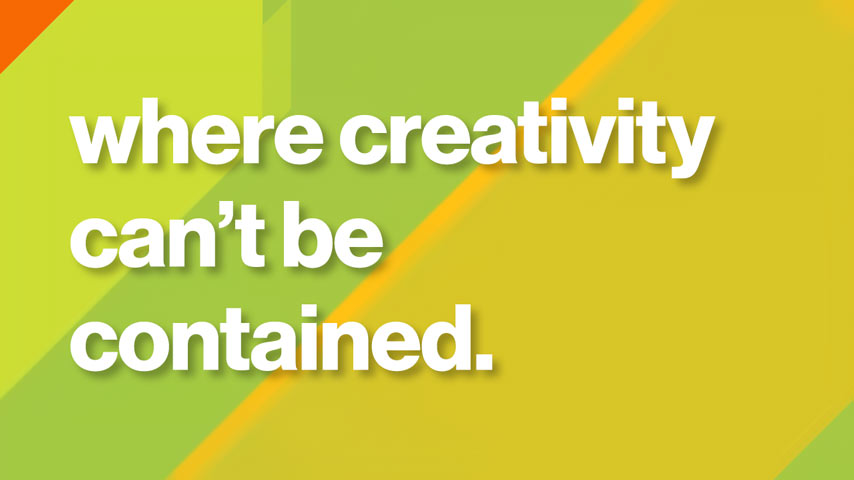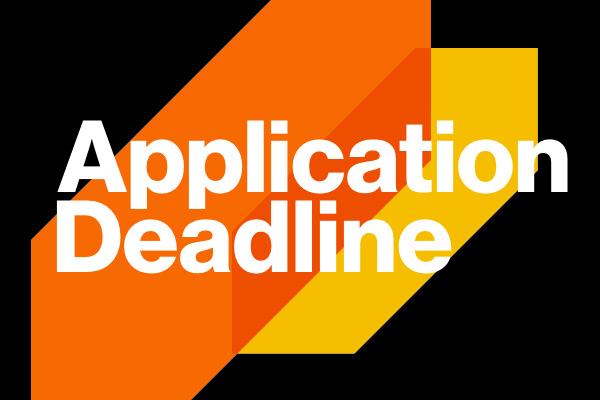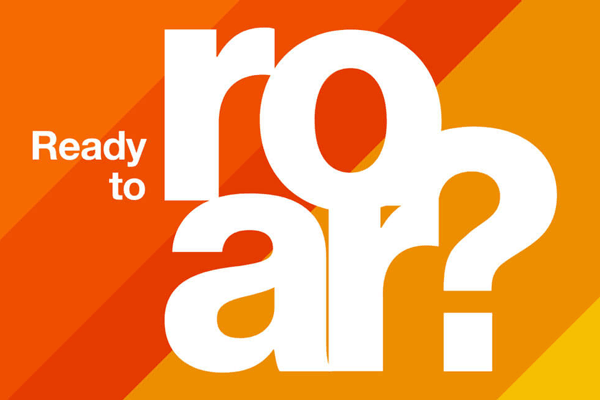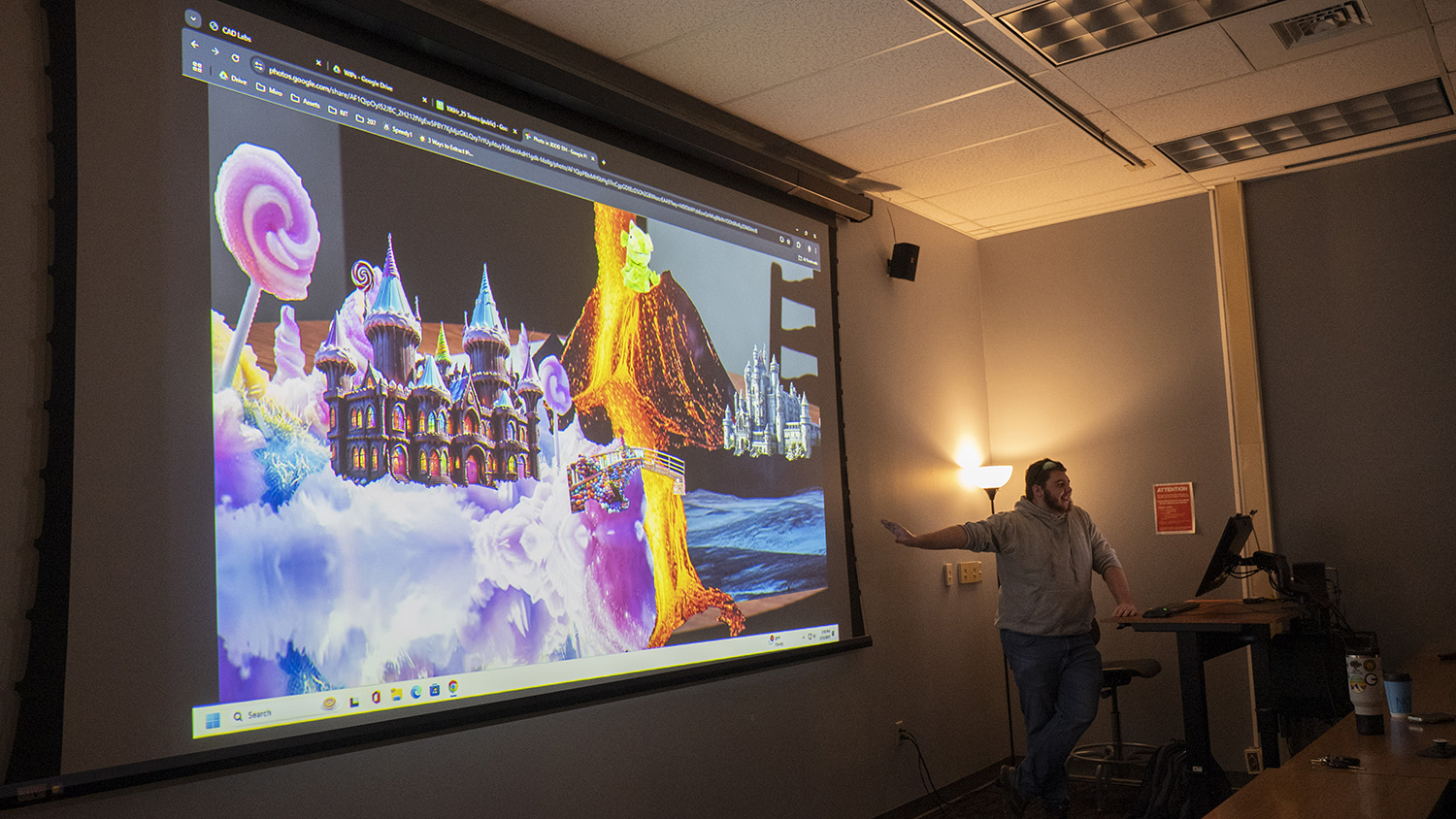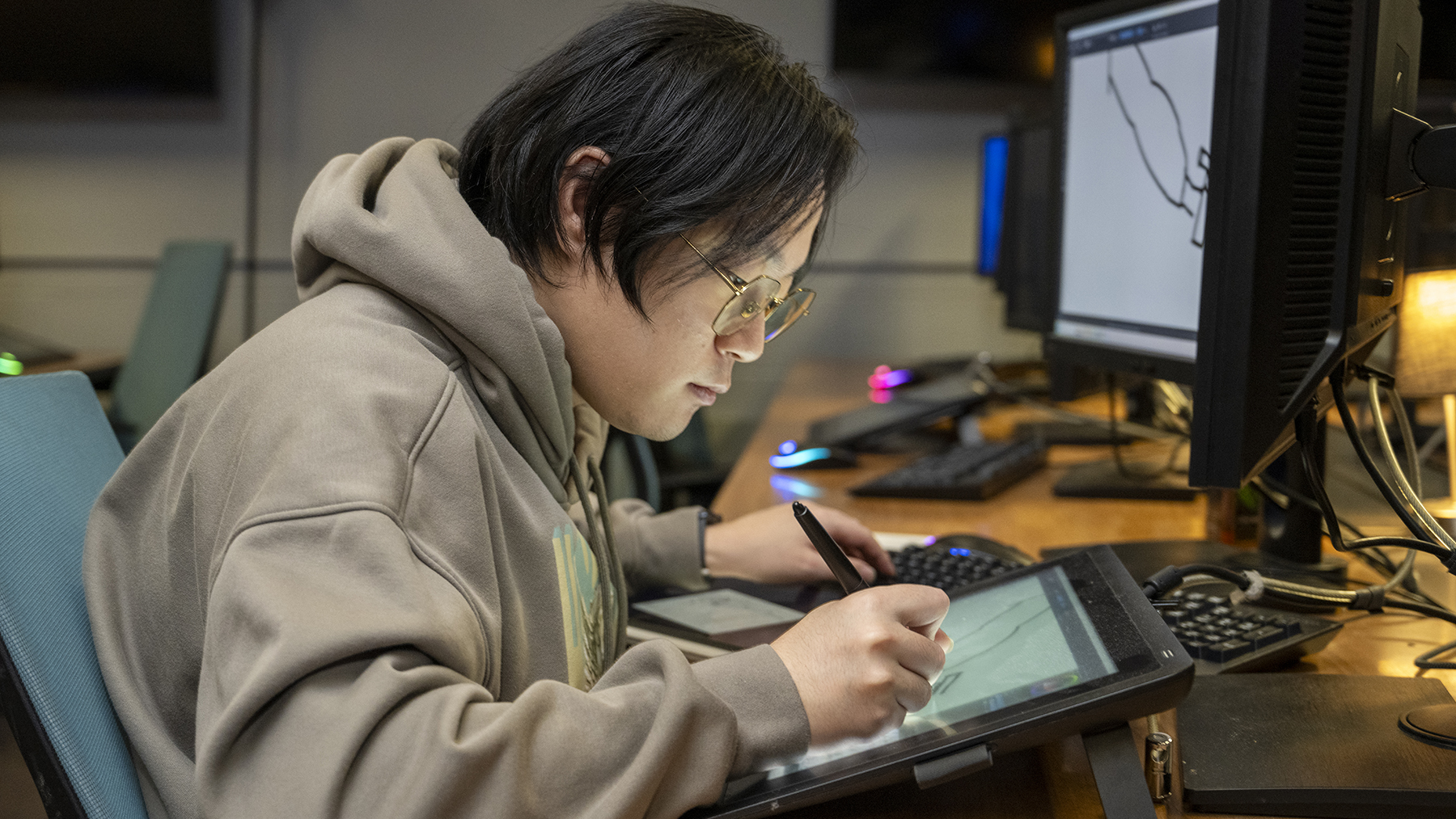3D Visualization Option - 3D Digital Design BFA
3D Visualization Option
3D Digital Design BFA
- RIT /
- College of Art and Design /
- Academics /
- 3D Visualization Option - 3D Digital Design BFA
RIT’s 3D design visualization degree emphasizes the creation and simulation of environments and objects for virtual spaces for a growing number of real-world opportunities.
Overview for 3D Visualization Option - 3D Digital Design BFA
Why Study Digital Visualization at RIT
3D Visualization Lecturers: 3D Visualization professionals are invited to RIT to lead lectures, discussions, and demos that give you an informed industry perspective.
Industry Networking: Take part in Creative Industry Day, which allows you to connect with professionals in your field of study.
Strong Career Paths: Alumni of the 3D visualization option can be found designing solutions to a broad range of challenges at top companies around the world in medicine, robotics, and other fields.
STEM-OPT Visa Eligible: The STEM Optional Practical Training (OPT) program allows full-time, on-campus international students on an F-1 student visa to stay and work in the U.S. for up to three years after graduation.
3d visualization design emphasizes creating and simulating environments and objects for virtual spaces for a growing number of real-world opportunities. RIT’s 3D digital design major offers a 3D design visualization option that gives you the flexibility to pursue a broad range of applications that use digital design as the platform for 3D content creation. Visit the 3D digital design BFA program page for information on curriculum and elective courses for this option.
3D Visualization Option Curriculum
From your first day in 3D design visualization, you’ll learn the design software professionals use for real-world digital design. You will also have the opportunity to:
- Use the computer labs in the College of Art and Design, which will provide you with access to professional-level 3D and animation software
- Collaborate with engineers, musicians, scientists, animators, and medical professionals, putting your 3D design abilities to use before you even graduate
Our digital visualization degree teaches you how to combine traditional design skills with the aesthetic and technical expertise to create virtual elements featured in TV and movies, virtual worlds, motion and broadcast graphics, and instructional multimedia. The 3D design visualization option also teaches skill such as:
- Data visualizations
- Augmented reality
- Medical and scientific simulations
- Architectural and engineering modeling
- Simulation for synthetic data generation
- Machine learning
The vehicles, avatars, lighting, and environments you make are all designed to imagine something new, visualize an idea, or simulate a process. Explore exciting and new discoveries in VR and augmented reality visualization, or try designing 3D environments in this digital visualization option. As you progress through the options you will discover new applications for your skills while working with advanced tools in a growing industry.
-
First-Year Applications Due Soon
Apply by Jan. 1 for Early Decision II and by Jan. 15 for Regular Decision.
-
Join Us for Accepted Student Open House
Visit campus on March 28 or April 11 to meet faculty, tour campus, and ask your questions.
Careers and Experiential Learning
Cooperative Education and Internships
What’s different about an RIT education? It’s the career experience you gain by completing cooperative education and internships with top companies in every single industry. You’ll earn more than a degree. You’ll gain real-world career experience that sets you apart.
Co-ops and internships take your knowledge and turn it into know-how. Your art and design co-ops will provide hands-on experience that enables you to apply your artistic capabilities in dynamic professional settings while you make valuable connections between classwork and real-world applications.
Students in the 3D visualization option are strongly encouraged to complete a cooperative education or internship experience.
Creative Industry Days
Connect with Design Industry Leaders
RIT’s Office of Career Services and Cooperative Education hosts Creative Industry Days, which connects students majoring in art, design, film and animation, photography, and select computing majors with companies, organizations, creative agencies, design firms, and more. Creative Industry Days are a series of events that allow you to network with company representatives and interview directly for open co-op and full-time employment positions.
Featured Work and Profiles
-
Building a Virtual Production Curriculum
Supported by MegaGrant from Epic Games, MAGIC Spell Studios has brought groundbreaking research and filmmaking techniques to RIT.
Read More about Building a Virtual Production Curriculum -
3D Digital Design Reel
A compilation of student work from the last few years.
Read More about 3D Digital Design Reel -
3D Digital Design Capstone Showcase - 2025
Select final projects from RIT's 3D digital design program class of 2025.
Read More about 3D Digital Design Capstone Showcase - 2025 -
Bringing Board Games to Life
It's game night! For the 2025 installment of the RIT 3D digital design program's annual 100 Hour Project, the theme was virtual game boards. The 100 Hour Project annually challenges teams of students...
Read More about Bringing Board Games to Life -
Recent alumna receives industry recognition
Priscilla Nascimento Priscilla Nascimento ’24 (3D digital design) was recognized in the 2024 Rookie Awards, a showcase organized by The Rookies that highlights exemplary work by young creatives as judged by industry...
Read More about Recent alumna receives industry recognition -
100 Hour Project - Into the Wormhole
RIT's 3D digital design program went into the wormhole with 12 teams of students designing their own corner of spacetime. The project was for the program's 100 Hour Project, an annual community...
Read More about 100 Hour Project - Into the Wormhole
Admissions and Financial Aid
This program is STEM designated when studying on campus and full time.
This option is part of the 3D digital design BFA. Please visit the degree program page for admission requirements.
Financial Aid and Scholarships
100% of all incoming first-year and transfer students receive aid.
RIT’s personalized and comprehensive financial aid program includes scholarships, grants, loans, and campus employment programs. When all these are put to work, your actual cost may be much lower than the published estimated cost of attendance.
Learn more about financial aid and scholarships
Related News
-
September 24, 2025

New School of Film and Animation director, faculty roles for 2025-26
Ricky Figueora taking over as the new director of RIT's School of Film and Animation headlines exciting promotions and additions to the College of Art and Design faculty.
-
April 29, 2025
Student brings photographic precision to 3D visual effects
Kendall Dirks' zeal for photography dates back to before high school and was used to enhance his 3D work at RIT, which included innovative projects and doing visual effects work for a feature film.
-
March 21, 2024

Innovation unleashed: students forge transdisciplinary projects at RIT's a2ru summit
Students leveraged the variety of makerspaces in RIT's brand-new SHED facility to create arts-integrative work responding to a theme of "Play."
Contact
- Gary Jacobs
- Undergraduate Program Director, 3D Digital Design
- School of Design
- College of Art and Design
- 585‑475‑6987
- gdjfaa@rit.edu
School of Design




